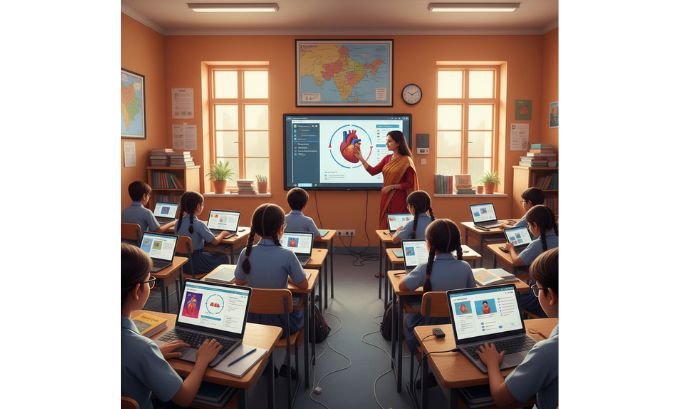The rise of digital education has transformed how students learn across India. For parents and educators, navigating the vast array of distance learning resources in India is a new and critical challenge. The objective is to find tools that not only align with the Indian curriculum but are also engaging, accessible, and built on a solid technological foundation.
This guide provides a practical look at leveraging global educational platforms within the Indian context. We’ll explore how tools like Brainingcamp can be adapted to support students from Mumbai to Kolkata, and how technical frameworks like SCORM and XML are paving the way for a more integrated digital learning future. By understanding both the resources and the technology behind them, educators in India can build a truly world-class learning experience.
Table of Contents
Tailoring Digital Math Education for Indian Students
Adapting distance learning resources in India for primary school mathematics requires a nuanced understanding of the local educational landscape. While math concepts are universal, teaching methodologies and curriculum priorities, such as those set by the CBSE and other state boards, are unique. The most valuable digital tools are those that can be flexibly integrated to support everything from Vedic math techniques to modern problem-solving skills.
International platforms offer a vast library of content, but their true strength in the Indian market lies in their adaptability. A resource like K5 Math Resources, for example, provides a universal collection of worksheets that can supplement specific chapters in an NCERT textbook. Likewise, interactive platforms like Brainingcamp offer visual learning aids that break down language barriers, making them an asset in a multilingual country like India. Let’s examine how these global resources can be effectively woven into the fabric of Indian education.
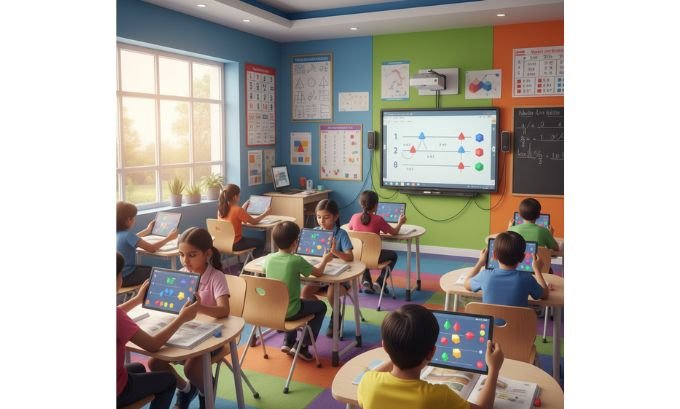
A Teacher’s Journey: Blending Global Tools in a Delhi Classroom
As an educator in a private school in Delhi, I was tasked with finding digital tools to support our transition to a blended learning model. My primary goal was to find distance learning resources in India that could cater to our diverse student body, which followed the CBSE curriculum but also had exposure to international teaching methods.
My search began with finding reliable, cost-effective materials for daily practice. K5 Math Resources quickly became an invaluable asset. Its extensive library of free, downloadable worksheets allowed me to provide targeted practice on topics like decimals and geometry that directly corresponded with our NCERT syllabus. The simple, clean format of the printables made them easy for parents to use at home, bridging the gap between school and home learning.
However, I knew that to truly captivate my students, I needed to go beyond static worksheets. Indian students thrive on interactive and visual learning. This led me to Brainingcamp, a platform filled with virtual manipulatives. During our unit on integers, we used the virtual number line. This was incredibly effective, as it allowed students to physically drag and drop points to visualize the addition and subtraction of negative numbers—a concept that is often tricky. The immediate, hands-on feedback helped several students overcome a major conceptual hurdle.
To make learning even more relevant, I started incorporating content from DataMap, Scholastic’s interactive magazine. We explored an article on the mathematics of cricket, analyzing player statistics and scoring rates. This immediately connected with my students’ passions. They were no longer just solving abstract problems; they were using math to understand their favorite sport. This experience underscored a key lesson: the most effective approach is to curate global resources and anchor them in the rich cultural context of India.
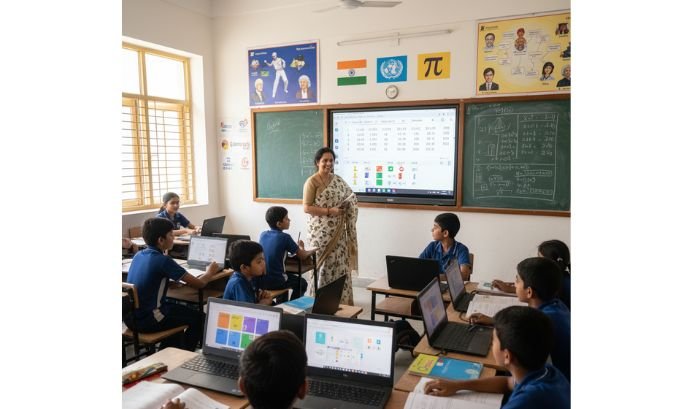
Strengths: Why These Global Resources Work in India
- Visual Learning: Tools like Brainingcamp are highly effective in a diverse country like India, as they use visual and interactive methods that transcend language and literacy barriers.
- Cost-Effective Solutions: The availability of high-quality free resources like K5 Math Resources is a massive advantage in a price-sensitive market, ensuring that more schools and families can access quality educational support.
- Curriculum Flexibility: The modular nature of these resources allows teachers to pick and choose content that aligns with the specific requirements of various Indian educational boards (CBSE, ICSE, State Boards).
- Structured Lesson Frameworks: Principles from educational initiatives like Ohio SchoolNet provide a universal template for creating objective-driven lessons, which can help Indian teachers structure their digital and hybrid classes more effectively.
Areas for Improvement: The Challenges of Adaptation
- The Digital Divide: Access to reliable, high-speed internet and modern devices remains a significant challenge, particularly in Tier-2, Tier-3 cities, and rural areas of India. This digital divide can exclude a large portion of students from benefiting from these resources.
- Language Localization: The majority of top-tier international platforms are in English. While English is widely used in Indian education, the lack of content in regional languages (like Hindi, Tamil, or Bengali) limits their reach.
- Cultural and Curricular Mismatch: Some content may not be culturally relevant. Furthermore, unique aspects of the Indian curriculum, such as Vedic Mathematics, are not typically covered in these global platforms.
- Affordability of Premium Tools: For subscription-based products like Mathletics Box, the cost, when converted to rupees, can be prohibitive for the average Indian family or school budget.
The Technology Powering a Global Classroom
The most effective distance learning resources in India and across the globe are built on a shared technological foundation. This architecture, designed for interoperability, allows different digital tools and content to communicate and work together seamlessly. This is what enables a teacher in Bengaluru to use a learning module created by a developer in Boston.
At the heart of this system is the Learning Object. As defined by ed-tech pioneers like Stephen Downes, a Learning Object is a small, reusable, and self-contained unit of digital instruction. It could be a short animated video explaining a concept in physics, an interactive quiz on Indian history, or a simulation of a chemistry experiment.
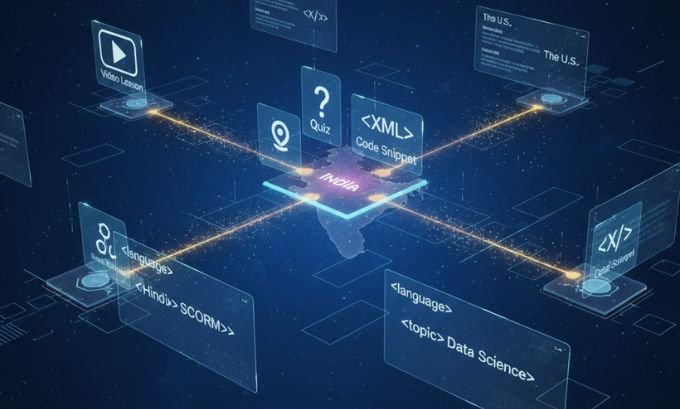
To ensure these objects can be used by any school on any platform, the e-learning industry relies on global standards. The SCORM (Sharable Content Object Reference Model) is a critical set of technical rules that dictates how Learning Objects are created, packaged, and tracked by a Learning Management System (LMS). This universal standard, promoted by organizations like the IMS Global Learning Consortium, is the engine driving a truly global and interconnected educational ecosystem.
How Interoperability Can Revolutionize Indian Higher Education
Consider a professor at an Indian Institute of Technology (IIT) who is developing a new online course on artificial intelligence. She wants to use a combination of her own research, case studies from Indian startups, and the best academic materials from around the world. Her university’s LMS is SCORM-compliant.
She licenses a series of advanced video lectures on machine learning from a top American university. Because they are packaged as Learning Objects, she can upload them directly into her course. Next, she finds an open-source simulation from a European research institute that models neural networks. As a SCORM package, it integrates without a hitch. Finally, she collaborates with her graduate students to create custom Learning Objects that feature case studies of successful AI implementations by Indian companies.
Each of these digital packages contains an XML (Extensible Markup Language) file that serves as a manifest. This file uses structured tags to describe the content’s metadata—its title, author, language, and learning objectives. For example, a tag like <keyword>Digital India</keyword> could be added to make the local content more discoverable. This XML backbone allows the LMS to understand, organize, and deliver content from these diverse global and local sources.
This ability to blend “best-of-breed” global content with hyper-relevant local knowledge is a paradigm shift for Indian education. It empowers educators to become expert curators, designing world-class courses that are both internationally competitive and deeply rooted in the Indian context. This practical application of the vision of Stephen Downes and the standards of the IMS Global Learning Consortium is no longer a future dream; it’s a present reality.
Comparing Global Learning Platforms for the Indian Market
Choosing the right platform requires evaluating its adaptability and affordability for the Indian market. The following table compares several leading international resources from this perspective.
| Resource | Key Feature | Price Point | Suitability for India |
|---|---|---|---|
| K5 Math Resources | Free printable worksheets | Free | High. Excellent for supplemental practice in schools with limited budgets. Content is universal and easily aligned with NCERT topics. |
| Brainingcamp | Interactive virtual manipulatives | Subscription | High. Visual tools overcome language barriers. Very effective for conceptual learning in a multilingual classroom environment. |
| DataMap (Scholastic) | Story-based math and science content | Subscription | Medium. Content is in English. Its value depends on the teacher’s ability to select articles relevant to the Indian context (e.g., space exploration, biodiversity). |
| Mathletics Box | Physical learning kits | Subscription | Low. The high cost of subscription and international shipping makes this a niche product, likely limited to affluent families and premium international schools. |
This comparison highlights that free digital libraries and visually-driven platforms offer the most potential for broad adoption in India. The success of any tool ultimately depends on its ability to provide high value at an accessible price point.
Blueprint for an Integrated Digital Lesson in India
Here’s a sample lesson plan for a 6th-grade science class in India, focusing on the topic of the solar system. This plan integrates global resources into a culturally relevant framework, following the structured, objective-driven approach promoted by educational models like Ohio SchoolNet.
Topic: Our Place in the Solar System
Grade Level: 6th (CBSE)
Learning Objective: Students will be able to identify the planets in our solar system and describe their key characteristics, referencing India’s contributions to space exploration.
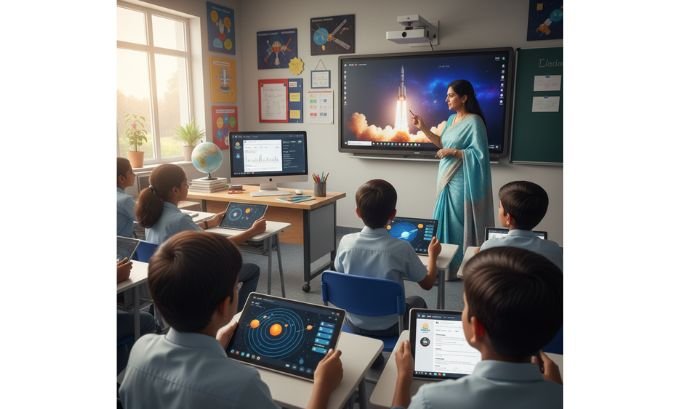
Lesson Activities:
- Ignite Curiosity (10 minutes):
- Hook: Start with a short, powerful video of the launch of India’s Mars Orbiter Mission (Mangalyaan). Use a video from a Learning Object repository.
- Discussion: Ask students: “What does it take to send a mission to another planet? What do we hope to learn?”
- Conceptual Exploration (20 minutes):
- Tool: Use a SCORM-compliant interactive solar system simulator.
- Activity: Guide students on a virtual tour of the solar system. As you “visit” each planet, discuss its key features (size, composition, distance from the sun).
- Collaborative Research (15 minutes):
- Resource: The official website of the Indian Space Research Organisation (ISRO) and other child-safe encyclopedias.
- Activity: In breakout groups, assign each group a planet. Their task is to find one interesting fact about their planet and research if ISRO has any future missions planned to study it.
- Literacy and Global Context (15 minutes):
- Resource: An article from a platform like DataMap about the international collaboration behind the International Space Station (ISS).
- Activity: Students read the article to understand how scientists from different countries, including those of Indian origin, work together in space. This builds reading comprehension and a global perspective.
- Check for Understanding (5 minutes):
- Tool: A quick quiz delivered via the LMS as a SCORM package.
- Content: The quiz includes image-based questions to identify planets and a multiple-choice question about the Mangalyaan mission. Results are automatically logged.
This lesson plan demonstrates how to create a rich, multi-layered learning experience. It leverages high-quality global distance learning resources while celebrating India’s own scientific achievements, making the content both educational and inspirational for students.
Frequently Asked Questions (FAQ)
1. What are the best free distance learning resources for Indian students?
India’s government offers several excellent free resources through the DIKSHA platform and SWAYAM portal. Additionally, international platforms like Khan Academy (which offers content in Hindi and other regional languages) and K5 Math Resources are fantastic for supplemental learning.
2. How can I ensure online resources align with the Indian school curriculum (CBSE/ICSE)?
While global platforms may not explicitly mention CBSE or ICSE, their content is often organized by topic (e.g., “fractions,” “photosynthesis”). Teachers can match these topics to the relevant chapters in the NCERT or their board’s textbooks.
3. What is a “Learning Object,” and how is it useful for Indian teachers?
A Learning Object is a reusable digital lesson on a single topic, a concept detailed by experts like Stephen Downes. For an Indian teacher, this means they could use a Learning Object on algebra from a global provider and combine it with their own Learning Object on the history of mathematics in India.
4. Are global e-learning standards like SCORM used in India?
Yes, SCORM is widely adopted by Indian universities, corporate training sectors, and many of the country’s leading EdTech companies. Using this standard ensures that the digital content they create or procure is compatible with various learning platforms.
5. How can I find good quality learning resources in Indian regional languages?
The DIKSHA platform is one of the best sources for content in multiple Indian languages. Additionally, many regional content creators on YouTube offer high-quality educational videos. Searching with keywords in the local language can yield excellent results.
6. What is the role of the IMS Global Learning Consortium in India?
The IMS Global Learning Consortium sets international standards for educational technology. Many Indian EdTech companies and institutions follow these standards to ensure their products are interoperable and can function in the global education market.
7. How does XML help in a multilingual country like India?
XML (Extensible Markup Language) structures data. In a SCORM package, XML can be used to manage content in multiple languages. This allows a learning platform to automatically deliver a lesson in Hindi to one student and in English to another, based on their preference.
Conclusion
The effective use of distance learning resources in India is not about replacing traditional teaching but about augmenting it with the best that digital technology has to offer. By skillfully blending adaptable global platforms like Brainingcamp with locally relevant content, and building on a foundation of universal standards like SCORM, Indian educators can create learning experiences that are both world-class and deeply Indian.
The journey towards a truly “Digital India” in education is well underway. The key to success lies in curation, adaptation, and a relentless focus on accessibility. By choosing tools that are flexible, affordable, and engaging, we can empower the next generation of Indian students to succeed on a global stage.
Take the first step today. Explore a free, adaptable resource like K5 Math Resources or a visual platform like Brainingcamp, and consider how you can integrate it into your teaching to spark curiosity and deepen understanding.


